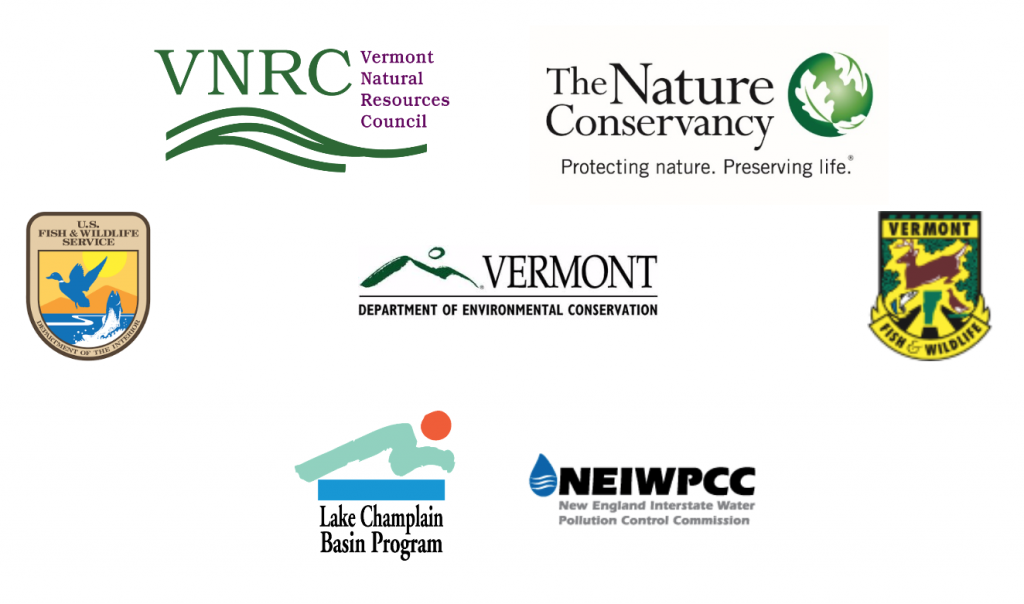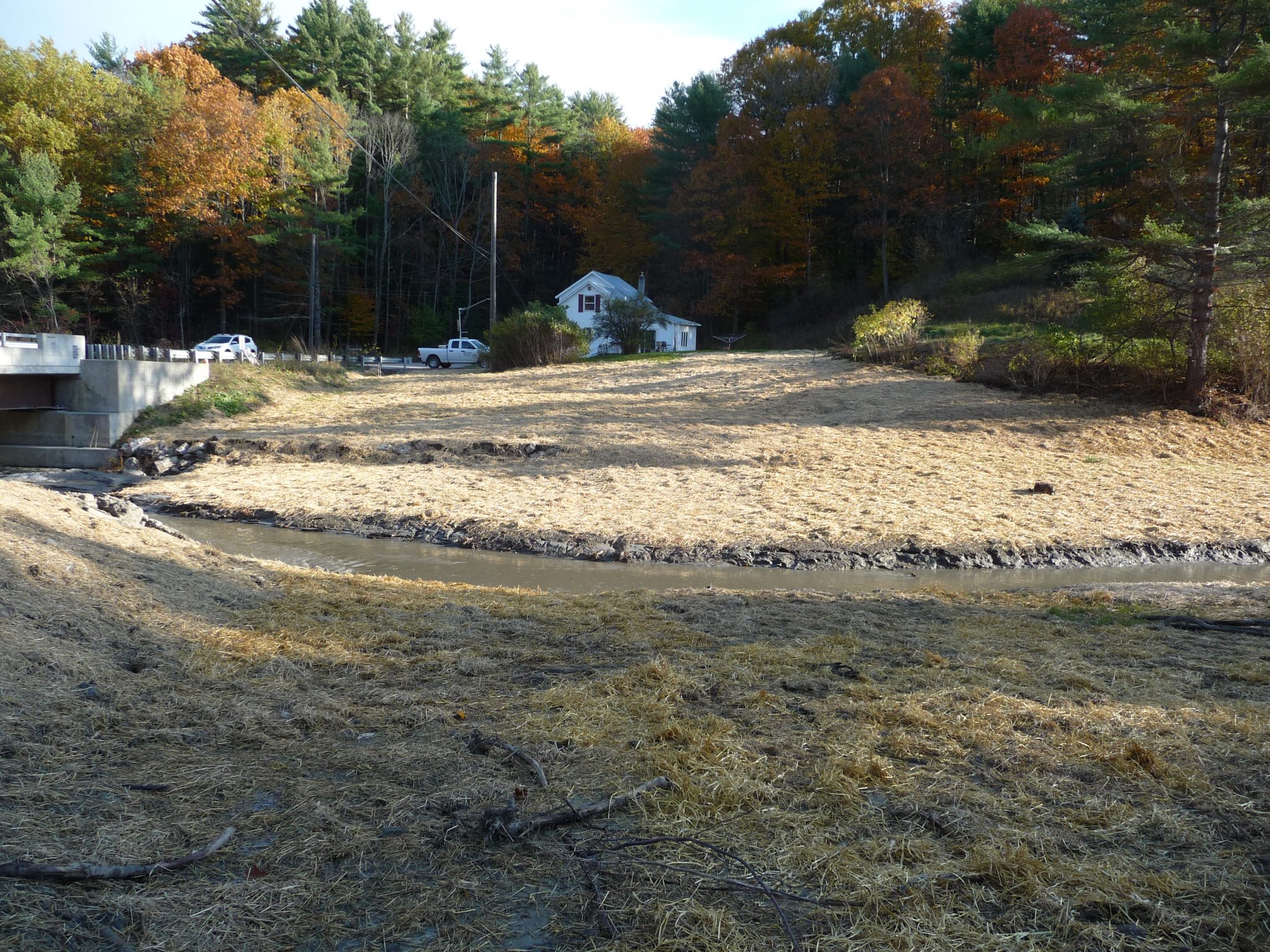The removal of Mill Pond Dam on Indian Brook in Colchester is now complete. The new stream channel and floodplain have been graded and seeded. Indian Brook will gradually be restored to a free-flowing stream, to the benefit of the aquatic ecosystem and public safety.
The Vermont Natural Resources Council (VNRC) began the dam removal in August following a two-year design and permitting process after the dam owner, Kim Scofield, requested assistance to remove it, citing it as a “financial burden I can live without.”
“The river will continue to adjust and regenerate, but we are already seeing tangible results,” said B.T. Fitzgerald, Dam Project & Vermont Dam Task Force Coordinator at VNRC. “Most importantly, 30,000 cubic yards of phosphorus-containing sediment has been removed.”
Fitzgerald explained that with the removal of the sediment, which was placed in an approved site where it will be isolated and well contained, the removed phosphorus will no longer be a source of contamination into Lake Champlain via Mallets Bay. Phosphorus contributes to algae blooms and excessive aquatic plant growth.
Engineer Roy Schiff of Milone and MacBroom Engineers of Waterbury, principal contractors on the project along with G.W. Tatro Construction of Jeffersonville, observed that Indian Brook is already forming new riffles, pools, sediment bars, and snags, and initial vegetation is growing in. The aquatic habitat is now more diverse, with river otters, great blue heron, coyote, black bear, deer, red-shouldered hawk, and minnows now appearing in and alongside the stream.
Mill Pond Dam was one of hundreds of small dams in Vermont that no longer serve a useful purpose. Though dams have existed on Indian Brook since the early 19th century to provide power for a series of sawmills, the last mill burned down in 1941. The deteriorating Mill Pond Dam was classified by the state Dam Safety Program as a “significant hazard,” meaning that should it fail, there would be potential loss of life and “appreciable” economic loss.
There is no longer a public safety hazard posed by the deteriorating dam. Next year, trees and shrubs will be planted in the new floodplain. The end result will be a natural, free-flowing stream.
“We are grateful to Kim [Scofield] for her willingness and interest to have the dam on her property removed, for the benefit of fish and wildlife, water quality, and flood resilience,” said Fitzgerald. “Other dam owners who would like to pursue removal should contact VNRC for help with these important projects.”
VNRC led the removal of Mill Pond Dam with support from its partners, The Nature Conservancy in Vermont and U.S. Fish and Wildlife Service.
Funding for design, permitting, and construction was provided by the Lake Champlain Basin Program, U.S. Fish and Wildlife Service, Vermont Department of Environmental Conservation – Clean Water Initiative Program, Vermont Department of Fish and Wildlife – Watershed Grant Program, and The Nature Conservancy in Vermont.
For more information about the work VNRC, The Nature Conservancy in Vermont and other partner organizations are doing to remove unused and unmaintained dams across Vermont, visit http://freevtrivers.org.
Find a video documenting the dam removal at https://vnrc.org/clean-water/dam-removal/.

This project was funded by an agreement awarded by the Great Lakes Fishery Commission to the New England Interstate Water Pollution Control Commission in partnership with the Lake Champlain Basin Program. NEIWPCC manages LCBP’s personnel, contract, grant and budget tasks and provides input on the program’s activities through a partnership with the LCBP Steering Committee.





